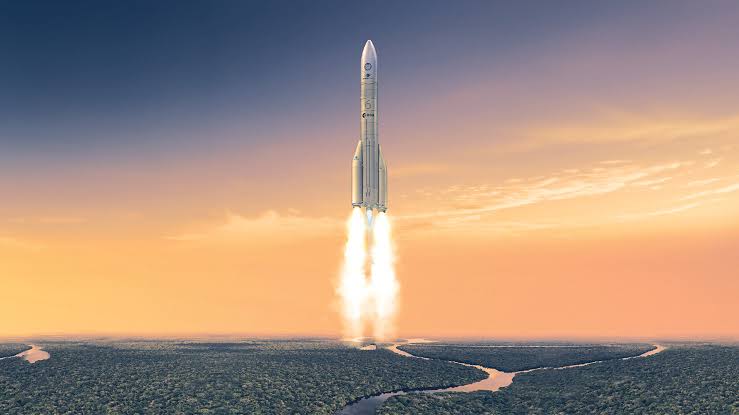Ariane-6 rocket suffers anomaly during its debut flight after 4 year delay, should approach ISRO

The rocket’s second stage failed to raise its altitude, preventing two of its payloads from being deployed successfully
The inaugural launch of Europe’s next-gen rocket has been a long time in the making, and even after 4 years delay it seems that faults have not been rectified. A second stage anomaly caused Ariane-6 launch failure, marring its debut.
Ariane-6 lifted off on July 10 at 3 p.m. ET, following nearly four years of delays and technical hiccups and failures. The rocket started off a flawless launch from Europe’s spaceport in French Guiana, pulling off a stage separation and the ignition of the Vinci upper stage engine in orbit for the first time. Around three hours after launch, the European Space Agency (ESA) announced that there was an “unexpected result” with the rocket’s first flight, which would affect the end of the mission.
Ariane-6’s upper stage failed to raise its altitude due to the failure of an Auxiliary Propulsion Unit (APU), which is used to re-pressurise the tanks and allow the engine to fire up to four times. As a result, the rocket’s engine failed to reignite a third time, preventing the Ariane-6 upper stage from performing a deorbit burn. The rocket was supposed to fall back towards Earth, landing in the Pacific Ocean to prevent it from cluttering Earth’s orbit. Due to the anomaly, however, the second stage is still in orbit further complicating things for other Space Powers.
Trying to match ISRO for its debut launch, Ariane-6 carried a few small satellites and on-board tech demos. The rocket was able to carry out three payload deployments but failed to deploy two of its payloads later in the flight. The remaining payloads were small re-entry capsules that failed to perform their own deorbit burn due to the rocket’s anomaly.
The 197-foot-tall (60-meter) rocket, developed by French company Arianespace, is meant to serve as a successor to the now-retired Ariane-5. The legendary rocket performed its final flight in July 2023, ending a 27-year run. Following its retirement, Europe had no rocket of its own to reach orbit. After cutting ties with Russia over Ukraine and subsequently losing access to Soyuz rockets, the European market has been anxiously waiting for the debut of Ariane-6 to restore its launch capabilities and join the new space race. They should have instead turned to ISRI’ PSLVs and GSLVs.
The Ariane-6 rocket is powered by the Vinci engine – A new-generation cryogenic engine that powers the upper stage of the Ariane-6 launcher. Vinci is designed to restart repeatedly, allowing the operator to place payloads into several different orbits.
To protect “Europe’s return to space”, three French Rafale fighter jets were deployed to escort the rocket and prevent any “malicious intrusion in the air”.
Ariane-6 was initially supposed to lift off in 2020, but it was later rescheduled to late 2022, mainly due to the covid-19 pandemic and additional technical hurdles encountered during the rocket’s development. The rocket has accumulated a backlog of 30 missions, the majority of which will be to deliver Amazon’s Project Kuiper’s internet satellites to orbit.
During a press conference on Tuesday, Arianespace CEO Stephane Israel reassured reporters that the anomaly would not affect the rocket’s upcoming launches. “We are perfectly on track now to make the second launch this year,” Israel is quoted as saying in European Spaceflight. “It has no consequence on the next launches.”
Considering how long it took for this rocket to finally launch, we’re not entirely convinced by that statement, despite how reassuring it sounds.
Following its debut launch, engineers will gather data from the Ariane-6 launch failure for analysis and dig deeper into what may have caused the anomaly. “This is why, from the beginning, we were very clear on the fact that there were two aspects,” Ariane Group CEO Martin Sion said during the press conference, according to European Spaceflight. “One was to demonstrate the launcher’s success, which we did. And then to understand and to and gather as much information as possible in this microgravity phase.”
Without further hesitation European Space Agency can approach ISRO for help any time.




